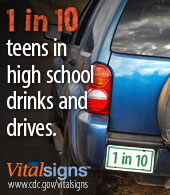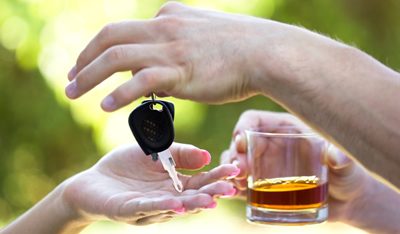BLOG: December is Impaired Driving Prevention Month
The holiday season is upon us, and that means higher traffic loads, increased chores, parties that involve alcohol, and any other number of factors that contribute to impaired or distracted driving. In response to this, it seems fitting that President Barack Obama has declared December National Impaired Driving Prevention Month. Impaired driving takes on many forms, yet the two most common and most dangerous come from driving under the influence of alcohol and driving distracted while texting. Both of these are issues of concern year-round, however December serves as a reminder to us all. This season, know the facts, play a role, and promote safety while on the road.
Fast Facts:
Every day, almost 30 people in the United States die in motor vehicle crashes that involve an alcohol-impaired driver. This amounts to one death every 51 minutes. The annual cost of alcohol-related crashes totals more than $59 billion.
 112 million times a year, alcohol-impaired drivers put you at risk.
112 million times a year, alcohol-impaired drivers put you at risk.
85% of drinking and driving episodes were reported by binge drinkers.
Drugs other than alcohol (e.g., marijuana and cocaine) are involved in about 18% of motor vehicle driver deaths. These other drugs are often used in combination with alcohol.
The more alcohol you consume, the more impaired you become. Learn in detail how your blood alcohol concentration (BAC) affects your ability to drive here.
Teen Drinking and Driving:
1 in 10 teens in high school drinks and drives.
Young drivers (ages 16-20) are 17 times more likely to die in a crash when they have a blood alcohol concentration of .08% than when they have not been drinking.
 85% of teens in high school who report drinking and driving in the past month also say they binge drank. In the survey, binge drinking was defined as having 5 or more alcoholic drinks within a couple of hours.
85% of teens in high school who report drinking and driving in the past month also say they binge drank. In the survey, binge drinking was defined as having 5 or more alcoholic drinks within a couple of hours.
1 in 5 teen drivers involved in fatal crashes had some alcohol in their system in 2010. Most of these drivers (81%) had BACs* higher than the legal limit for adults.
Research has shown that factors that help to keep teens safe include parental involvement, minimum legal drinking age and zero tolerance laws, and graduated driver licensing systems. These proven steps can protect the lives of more young drivers and everyone who shares the road with them.
Texting While Driving:
Text messaging creates a crash risk 23 times worse than driving while not distracted.
40% of all American teens say they have been in a car when the driver used a cell phone in a way that put people in danger.
11% of drivers aged 18 to 20 who were involved in an automobile accident and survived admitted they were sending or receiving texts when they crashed.
For more tips on your role and how you can prevent distracted driving, visit the FCC website here.
What you can do:
- Plan ahead and designate a sober driver before celebrations begin
- Plan safe parties. Provide non-alcoholic drink options and don’t serve until the last hour of the gathering
- Never provide alcohol to those under age 21
- If you’ve been drinking, call a taxi, a sober friend or family member, or use public transportation.
- If you see an impaired driver on the road, call your local law enforcement immediately.
- If you know someone who is about to drive or ride with someone who is impaired, take their keys and help them make arrangements.
- Give youth and teens clear instructions on not texting while driving.
- Lead by example. Follow safe driving policies and leave your cell phone out of reach.
- Be aware and conscious of the distracting nature of technology. Just put it away!
- If you need to contact someone, call them. Use ‘speaker’ when possible or use hands-free optionsif provided by your vehicle.
Follow us on Twitter to join the conversation.
Follow our Impaired Driving Prevention and Underage Drinking Prevention boards on Pinterest!
Sources: http://www.cdc.gov/, http://www.madd.org/, http://www.fcc.gov/






